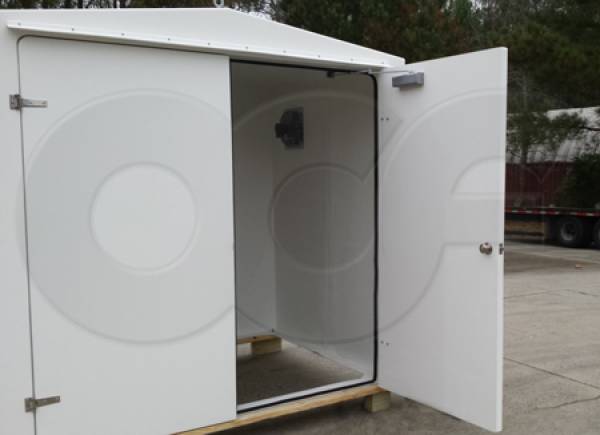This website uses a variety of cookies, which you consent to if you continue to use this site. You can read our Privacy Policy for
details about how these cookies are used, and to grant or withdraw your consent for certain types of cookies.
Non-Powered Ventilation of Fiberglass Shelters
Although it isn’t always possible to bring power out to a where you need an equipment shelter, that doesn't mean that there isn't a need for it. For those applications Openchannelflow offers a range of non-powered ventilation options for our fiberglass equipment enclosures and walk-in shelters.
Fixed Vents
Fixed vents are an easy and economical way to vent an equipment shelter. Typically used as a set of two, round vents can be placed on the sidewall of the unit towards the peak. This allows heat to exit the shelter as it builds up. Rainproof, these vents are usually 5 or 6-inches in diameter and are installed so that an insect screen is inserted between the vent covers on the inside and outside of the shelter.
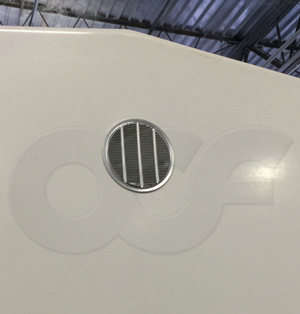
Door Vents
In space constrained applications, it may be necessary to install a vent in the door of the shelter. This allows the otherwise (potentially) limited wall space inside to be used to mount equipment. Like the round vents above, door vents have a fixed blade design, making them suitable for only certain climates.
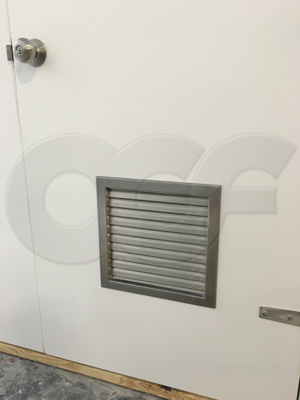
Unlike fixed vents which are made from lightweight stamped aluminum or stainless steel, door vents are made to withstand abuse and are made from thicker gauge welded stainless steel.
Door vent sizes range from 12-inches x 12-inches to 24-inche x 24-inches and can be used alone on single doors or in pairs on double doors.
With their larger size, the louvers on door vents are angled such that they are vision proof. Stopping the curious from seeing what’s inside the shelter.
Adjustable Vents and Shutters
Adjustable vents can take two forms: round vents like above with a twist shutter closer or larger manually adjustable rectangular shutter.
The round vents add an interior collar that moves a set of blades that cover or expose the stamped louvers on the outside of the vent. A tab is provided either on the inside or outside of the vent depending upon the model.
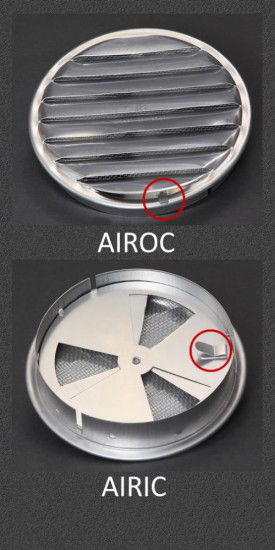
When larger airflows are required, manually operated fiberglass shutters are available. Here adjustable shutters are mounted into a fiberglass frame to which an actuation rod is secured on the inside of the shelter. Pull the rod up / pushing it down opens / closes the shutter louvers. The operator must manually open / close the shutters. Should it be left open during cold weather, there is nothing to automatically close the shutter.
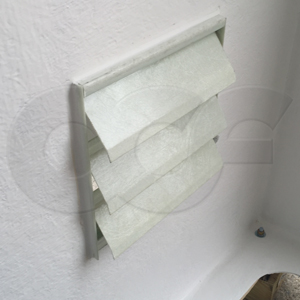
While not designed to be rainproof by themselves, Openchannelflow mounts a fiberglass weatherhood over each shutter to make the installation weatherproof. On the inlet / outlet of the weatherhood insect screen is mounted. This screen can either be permanently mounted to the weatherhood or it can be removable / washable.
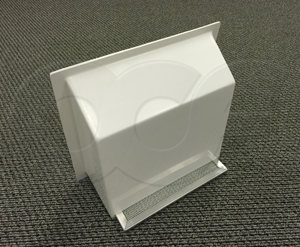
Hybrid Ventilation
Using Venturi action, hybrid ventilators can provide active ventilation without the need for power. Here the ventilation is provided by wind blowing across a specially designed cowl / blade system.
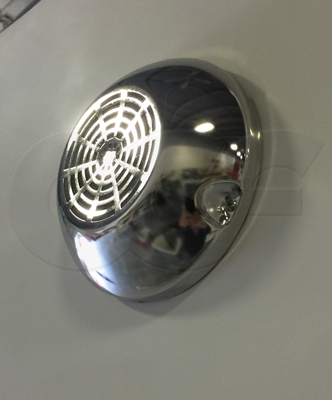
The amount of ventilation is determined by the wind speed and the position of the interior plunger that opens / closes the vent. In a 6 mile an hour wind, the hybrid ventilator will provide active ventilation of 5.83 cfm / 350 cfh.
Solar Powered Vents
Finally, for installations that receive good sunlight over at least 6 hours a day, solar powered ventilators are available. The ventilators are available in 3 and 4-inches in sizes and can provide up to 17 cfm / 1,000 cfh of ventilation.
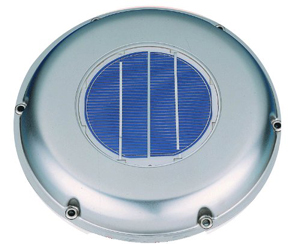
Typically the solar power ventilators have Ni-Mh batteries allowing the vent to run even when no direct sunlight is available. However, unlike the hybrid ventilators, they are affected by the amount of sunlight available. Should the vent be blocked or obscured, ice / snow build up, or the weather is sufficiently cloudy, the solar power vent will not actively exhaust.
Images: Midget Louver, Solartron Incorporated
Related Blog Posts
Explore more insights in our blog.

LOCATIONS IN ATLANTA, GA & BOISE, ID



